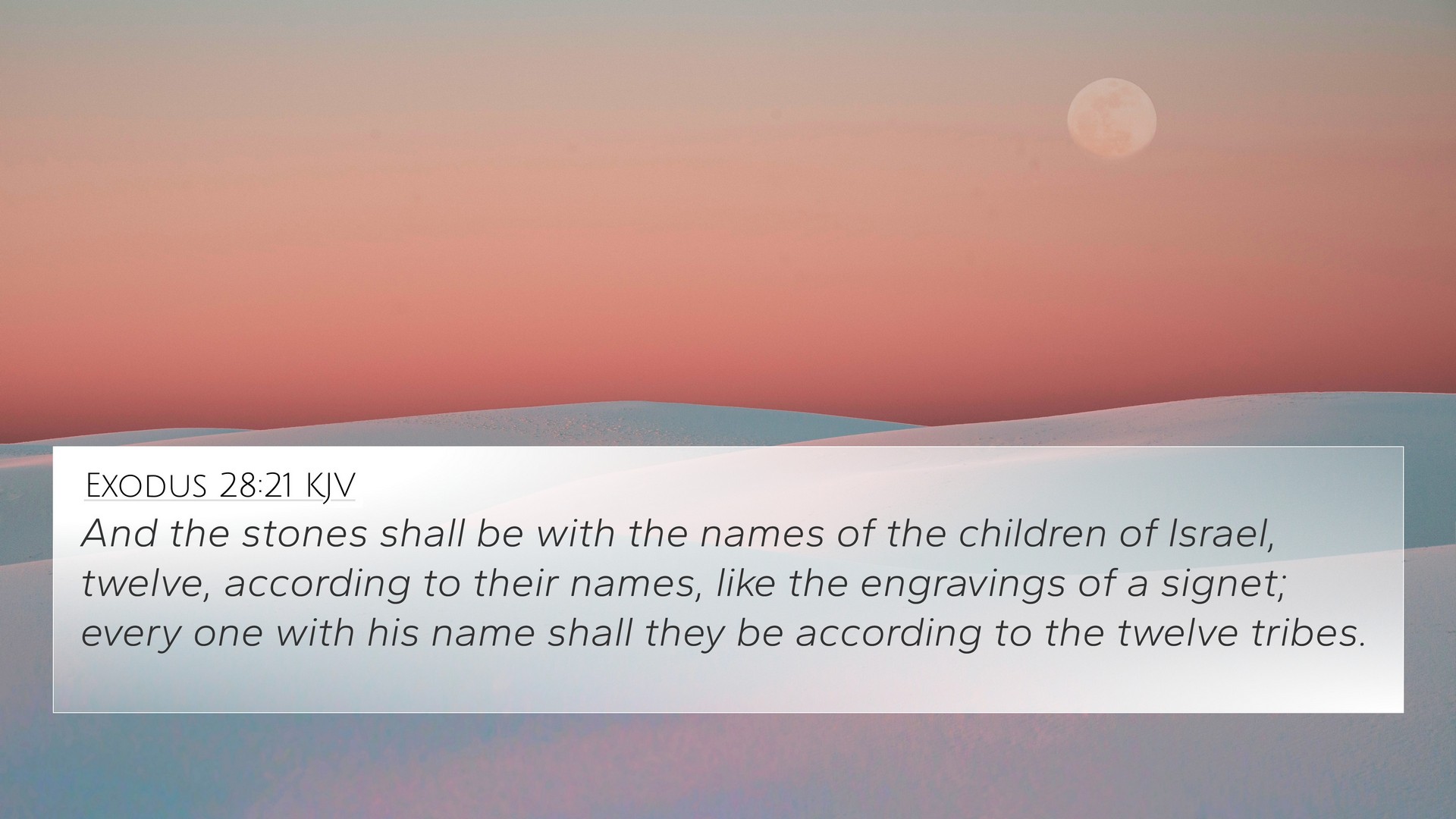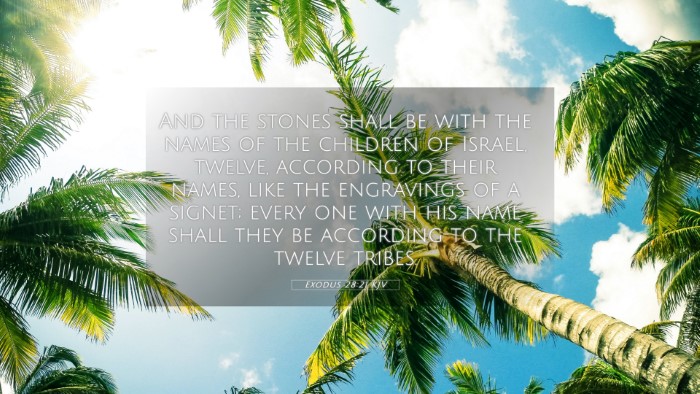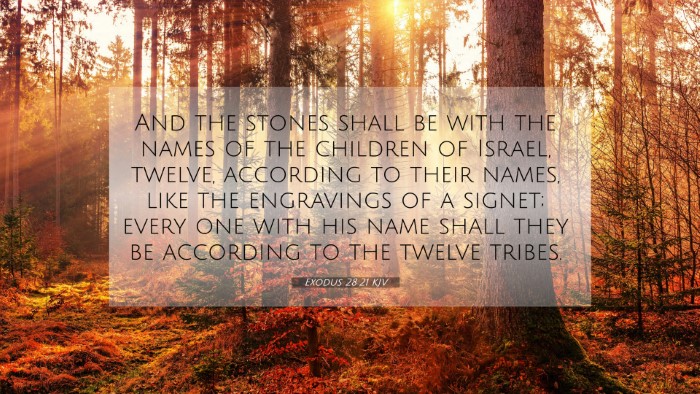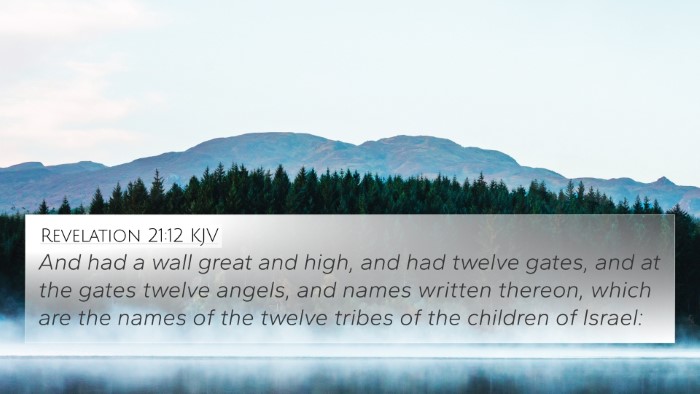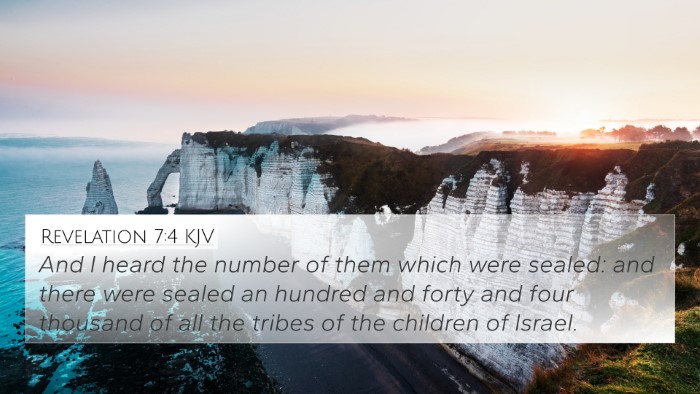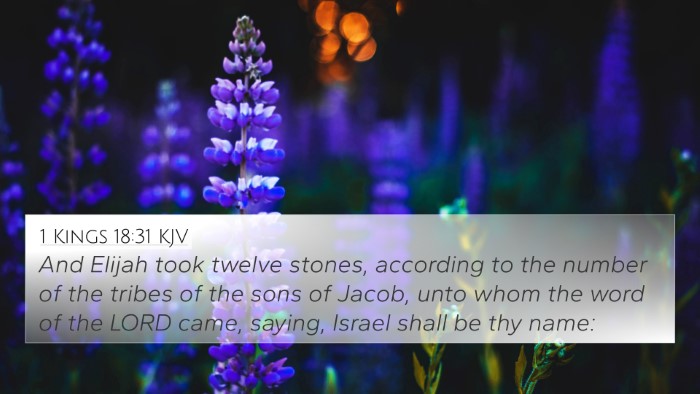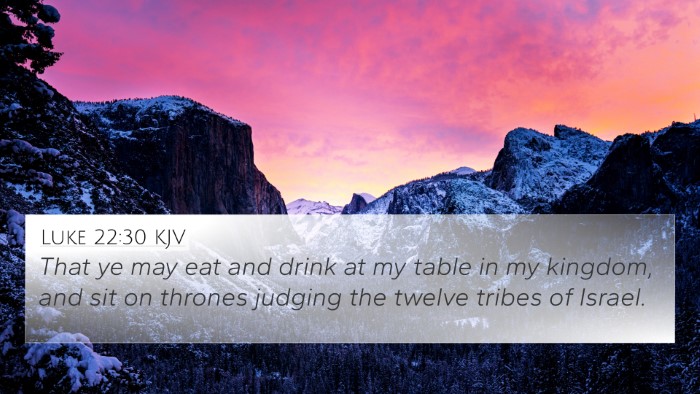Understanding Exodus 28:21
Exodus 28:21 states, "And the stones shall be with the names of the children of Israel, twelve, according to their names, like the engravings of a signet; every one with his name shall they be according to the twelve tribes."
Meaning and Significance
In this verse, God commands the Israelites to inscribe the names of the twelve tribes on the stones of the high priest’s breastplate. This breastplate, also known as the "breastplate of judgment," symbolizes the high priest's role as a mediator between God and His people. The act of engraving the names signifies not only representation but also the importance of each tribe before God.
Commentary Insights
Matthew Henry's Commentary
Matthew Henry emphasizes the significance of the names being engraved on the stones, reflecting God's intentionality in recognizing each tribe. He notes that, much like a signet, it indicates authority and the exclusive claim God has over His people. These stones serve as reminders of the identity and heritage of the Israelites before the Lord.
Albert Barnes' Notes
Albert Barnes points out that the breastplate's design serves a dual purpose: it relates to the tribes' identity and suggests their collective role in relation to the covenant with God. This highlights the continuity of God's promises through the generations, establishing a thematic connection to God’s overarching plan for redemption.
Adam Clarke's Commentary
Adam Clarke elaborates on the symbolism inherent in this verse, noting that the tribal names being on the breastplate underscores the high priest's responsibility as he enters the holy place. Clarke suggests that not only is this a physical act of representation, but it also embodies the spiritual connection each tribe has with the priestly office, allowing them to be “carried on the heart” of the high priest in divine service.
Connections Between Bible Verses
Understanding Exodus 28:21 requires recognizing its relevance within the broader narrative of Scripture. Several cross-references illuminate its themes:
- Revelation 21:12 - References the twelve tribes of Israel, echoing their significance in God's kingdom.
- Numbers 1:48-54 - Discusses how the tribes were organized and their unique identifiers, reinforcing the communal aspect of Israel.
- Hebrews 7:14 - Highlights Jesus' lineage from Judah, linking the priestly functions to the New Covenant.
- Exodus 39:14 - Describes the preparation of the priestly garments, including the breastplate’s stones.
- Isaiah 49:16 - God promises to engrave His people on the palms of His hands, showing His intimate connection with His followers.
- Galatians 3:28 - Illustrates the unity of believers as one in Christ, reflecting the significance of each tribe in the body of Christ.
- 1 Peter 2:9 - Describes believers as a chosen people, called to reflect God's light, paralleling the identity of the tribes.
- Exodus 28:11 - Discusses the craftsmanship of the stones and the solemnity of the priestly office.
- Lamentations 1:12 - Expresses grief over the loss of identity, emphasizing how each tribe's name carried deep meaning.
- Romans 15:4 - Affirms that scriptures were written for our learning, furthering the importance of understanding tribal heritage in God's plan.
Thematic Connections and Cross-Referencing
The thematic context of Exodus 28:21 not only ties back to the covenant but also to the overarching narrative of identity, representation, and divine appointment. Tools for Bible cross-referencing help uncover these deeper layers and guide the reader through connections that illuminate the text’s richness.
- Identity of God’s people: Each name engraved represents the unique identity every tribe has with God.
- Divine appointment: The high priest carries the names before God, illustrating His appointed authority and mediation.
- Covenantal relationship: The presence of these names signifies God's continuous relationship with His people across generations.
Applying Cross-Referencing in Bible Study
Understanding how to find cross-references in the Bible enhances one’s study of Scripture. Identifiers like these enhance biblical interpretation and create profound connections between different passages. For example, comparative Bible verse analysis can reveal how the tribes of Israel represent various aspects of God’s covenant with humanity.
Conclusion
Exodus 28:21 serves as a profound reminder of God's commitment to His people throughout history. By employing tools for Bible cross-referencing, readers can uncover the depth of meaning and the interconnectedness of biblical themes. This enriches their understanding of Scripture and enhances their spiritual journey.
